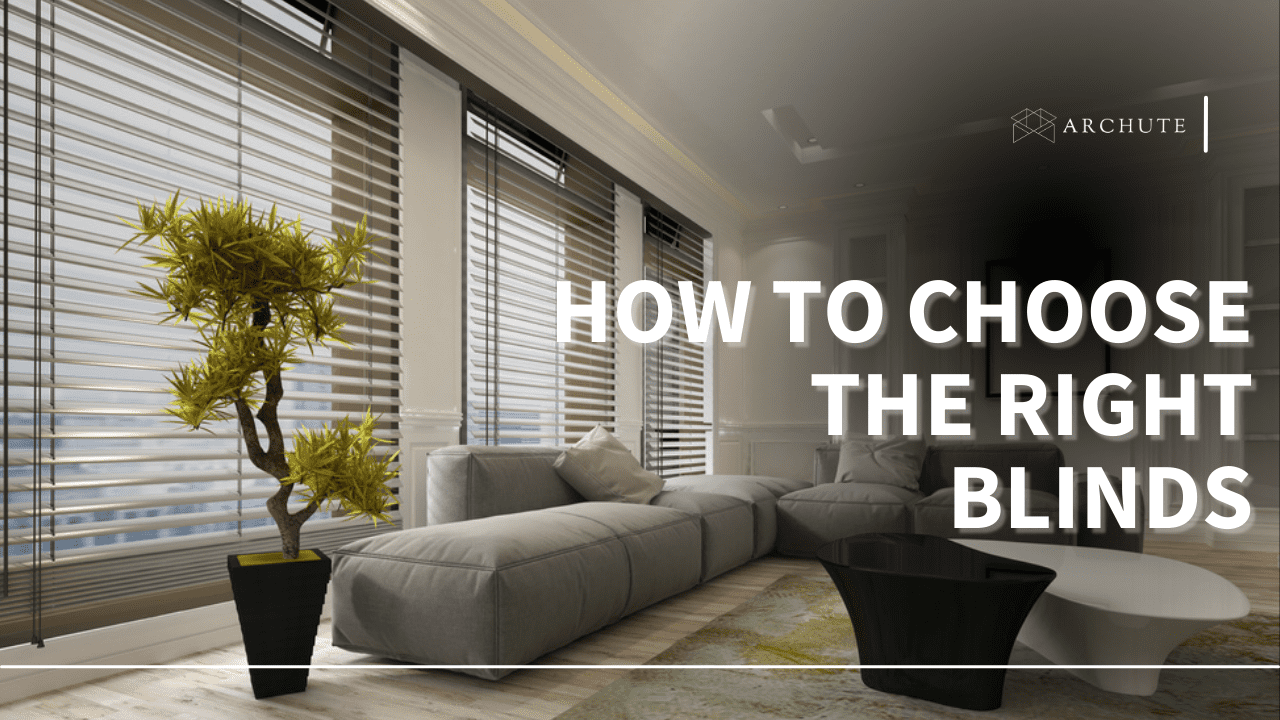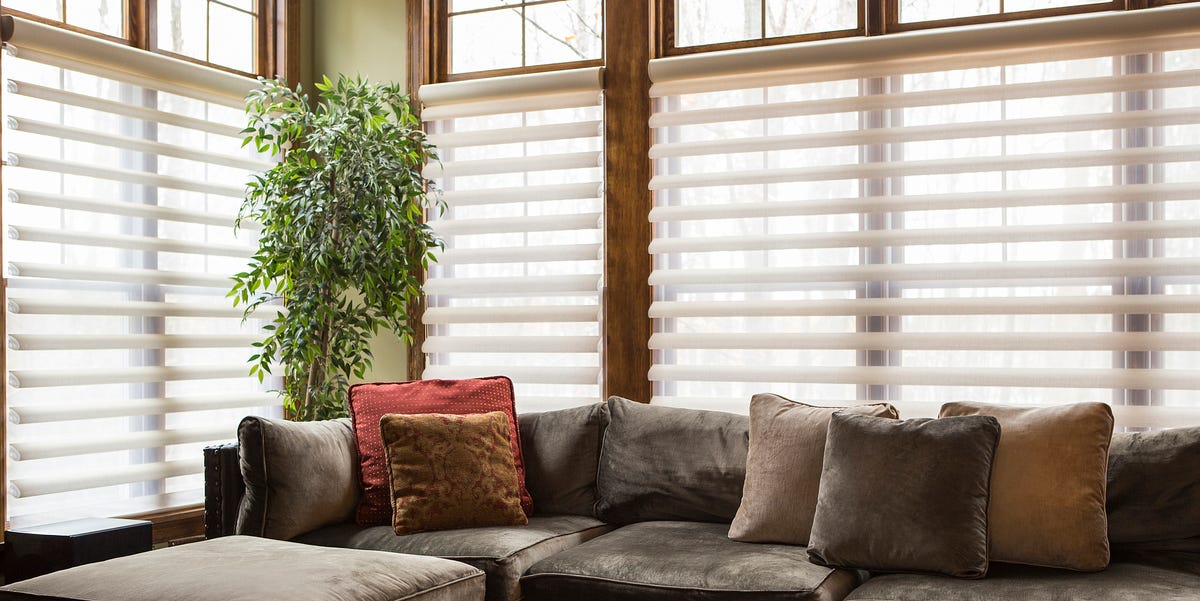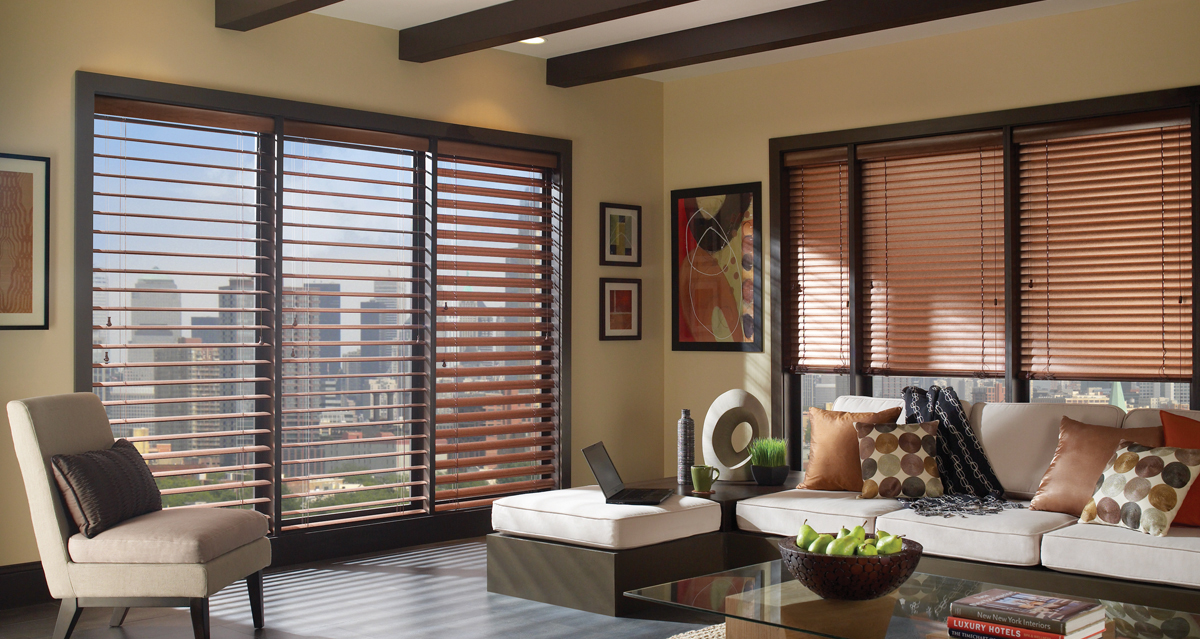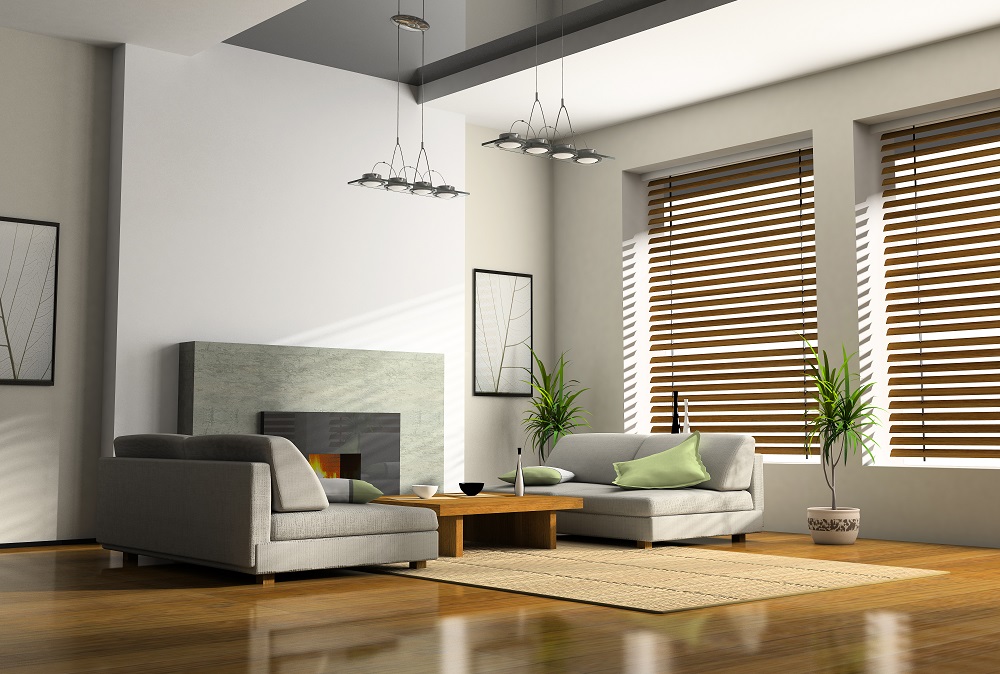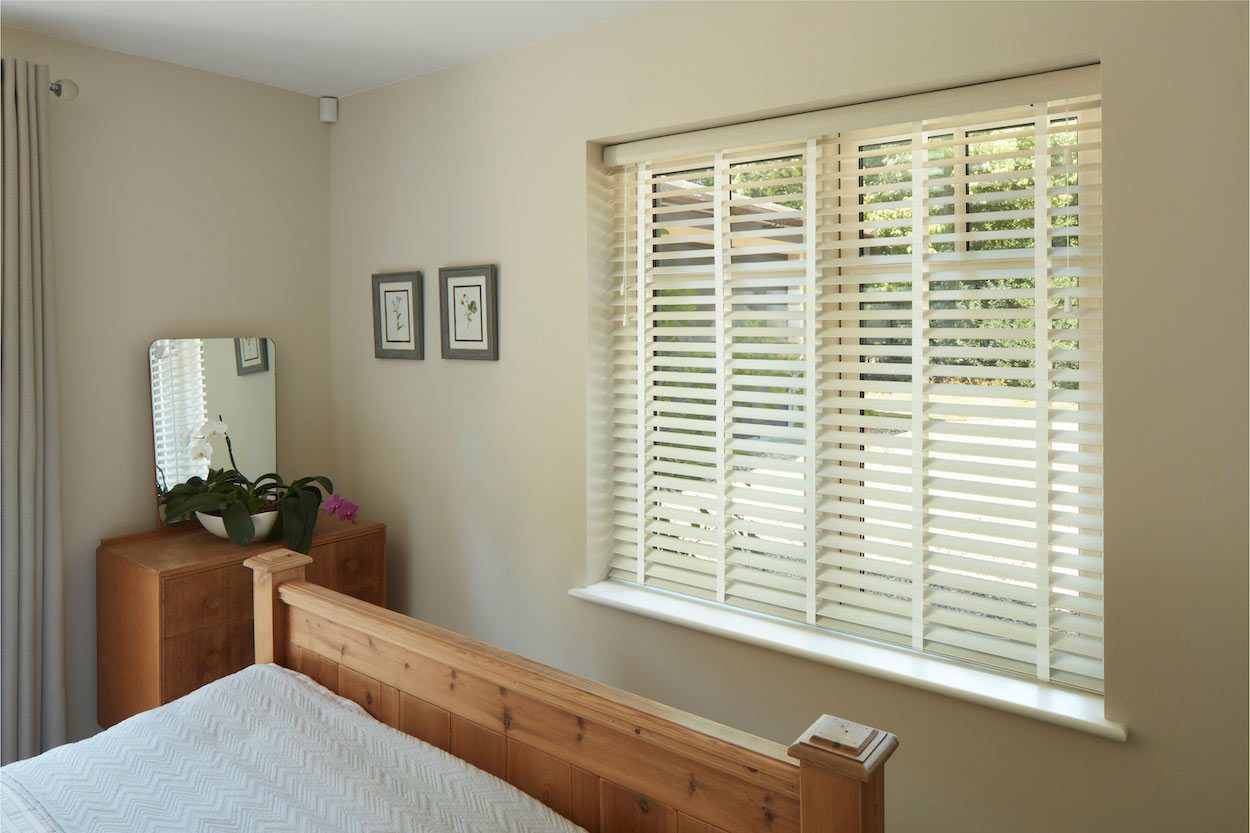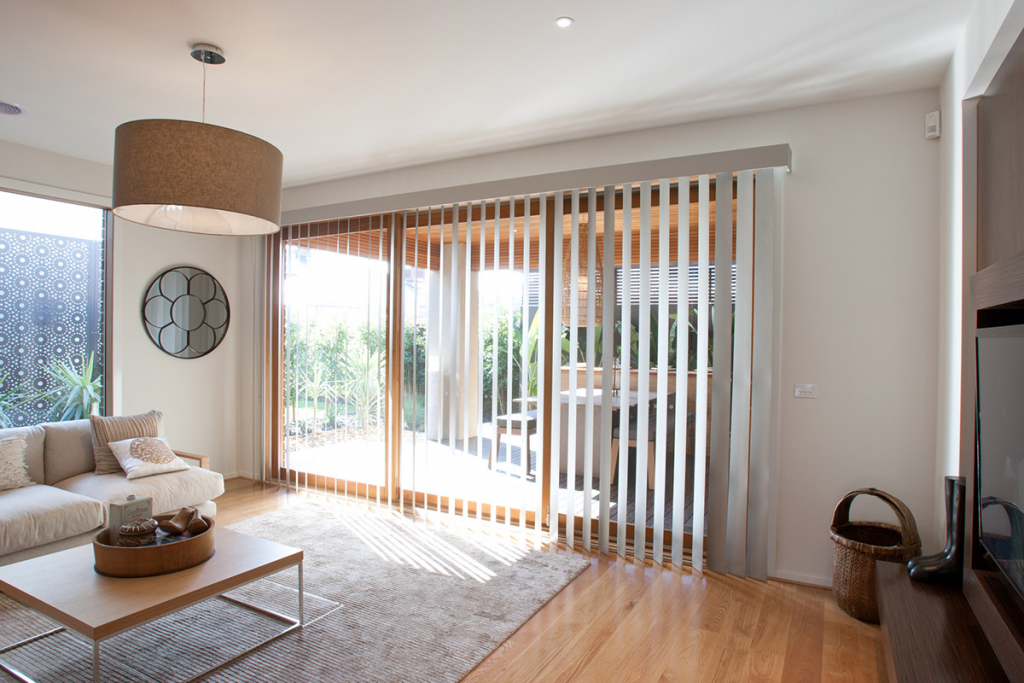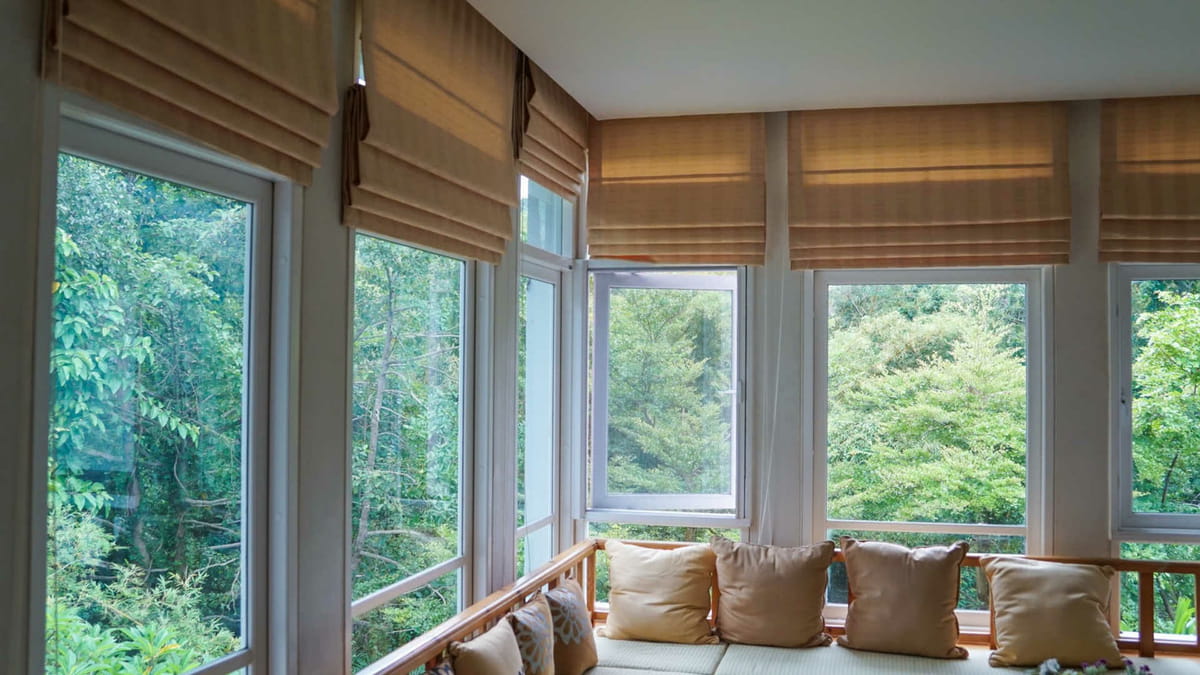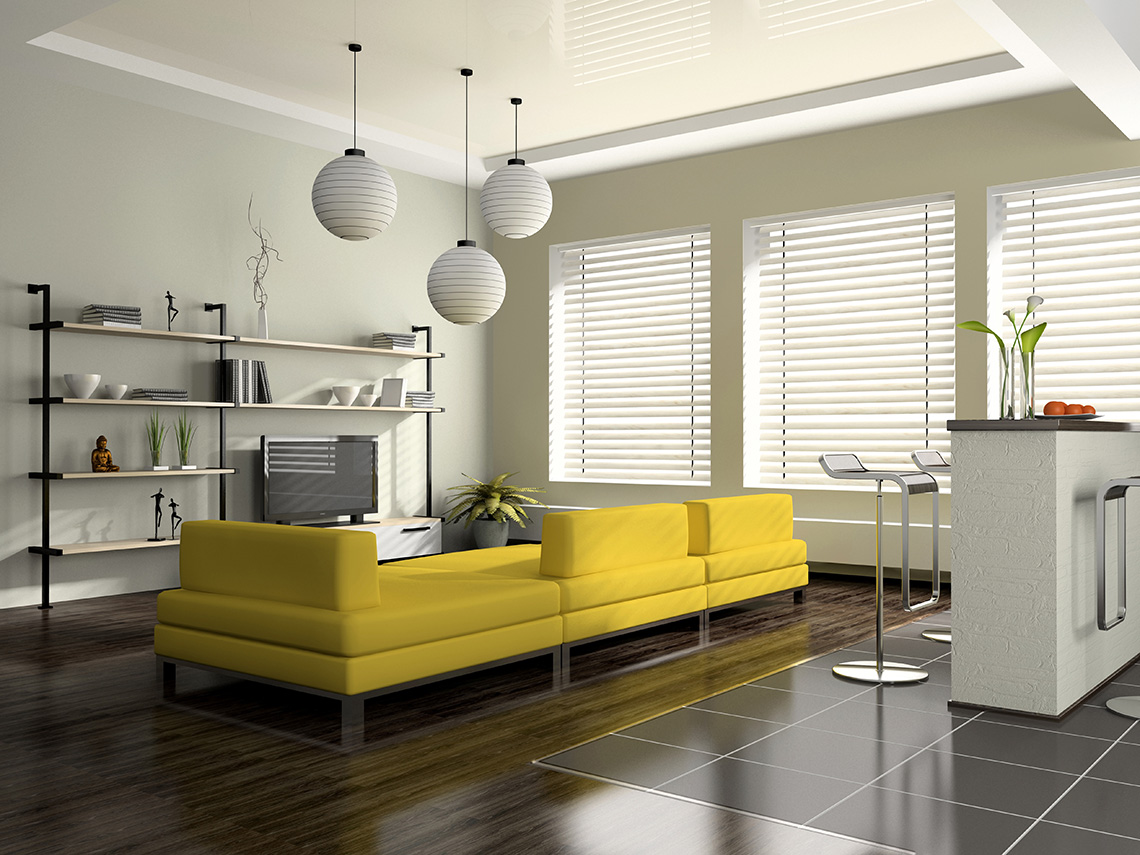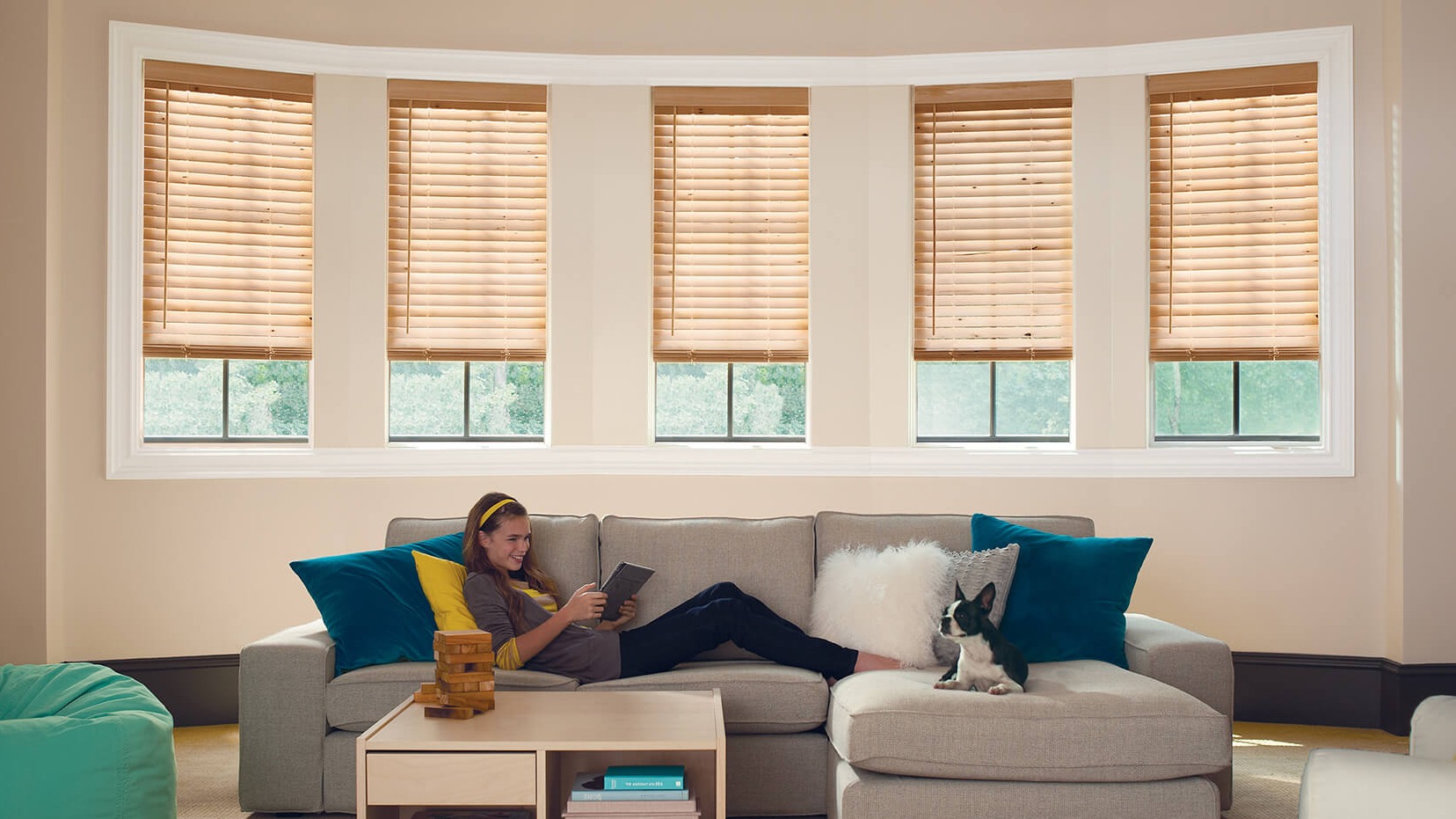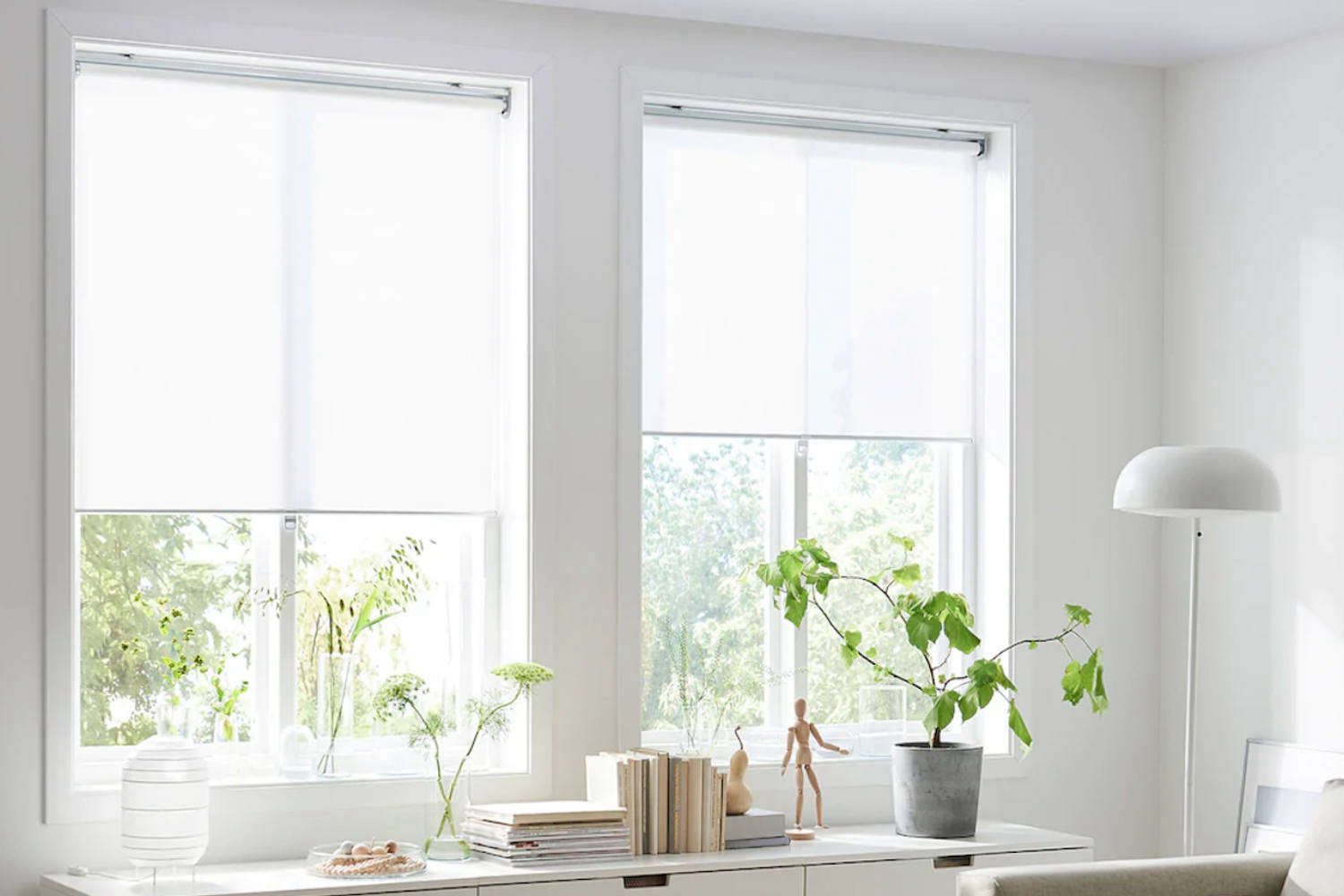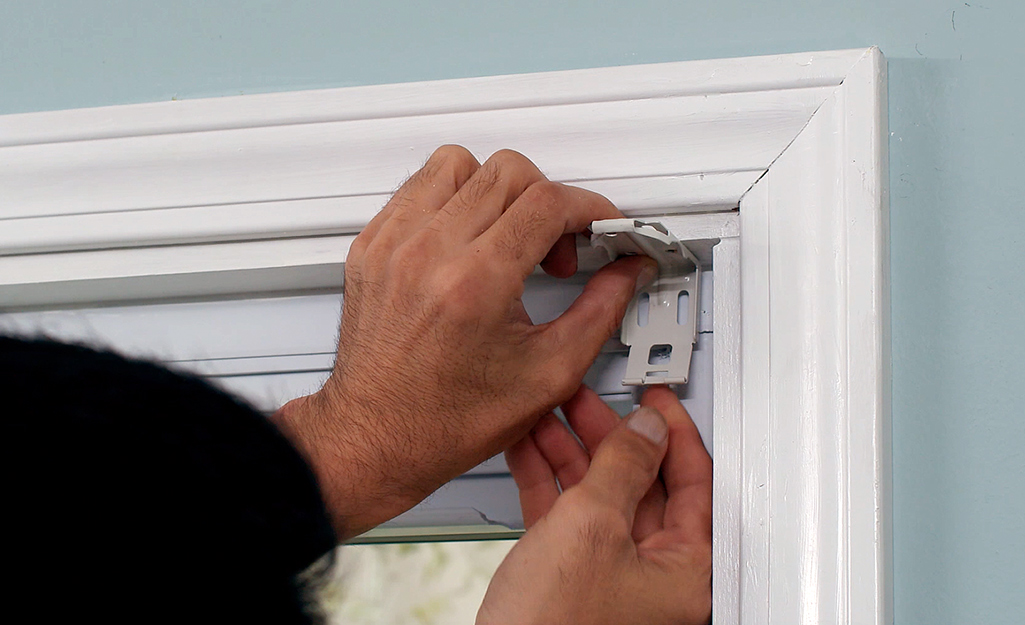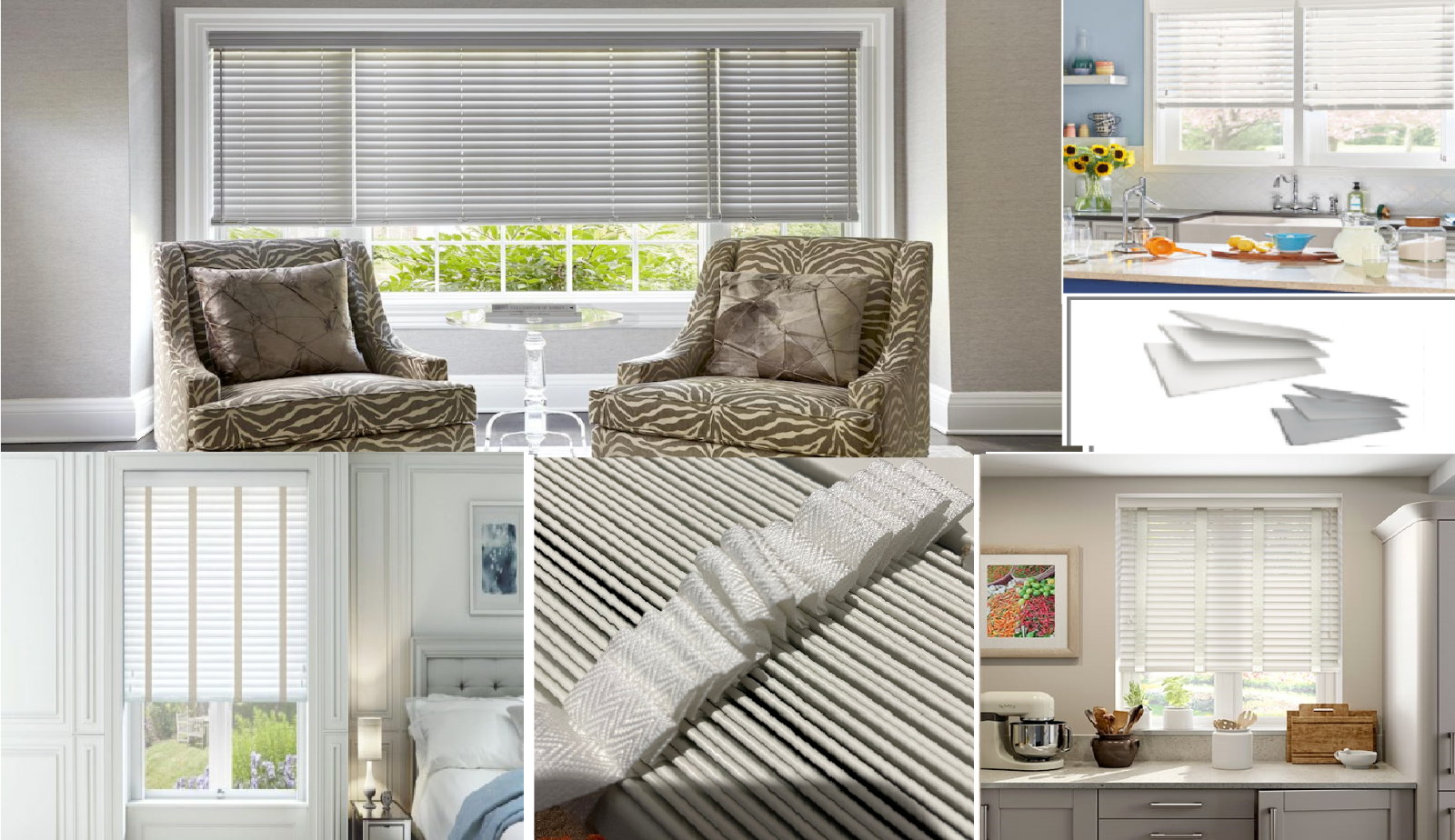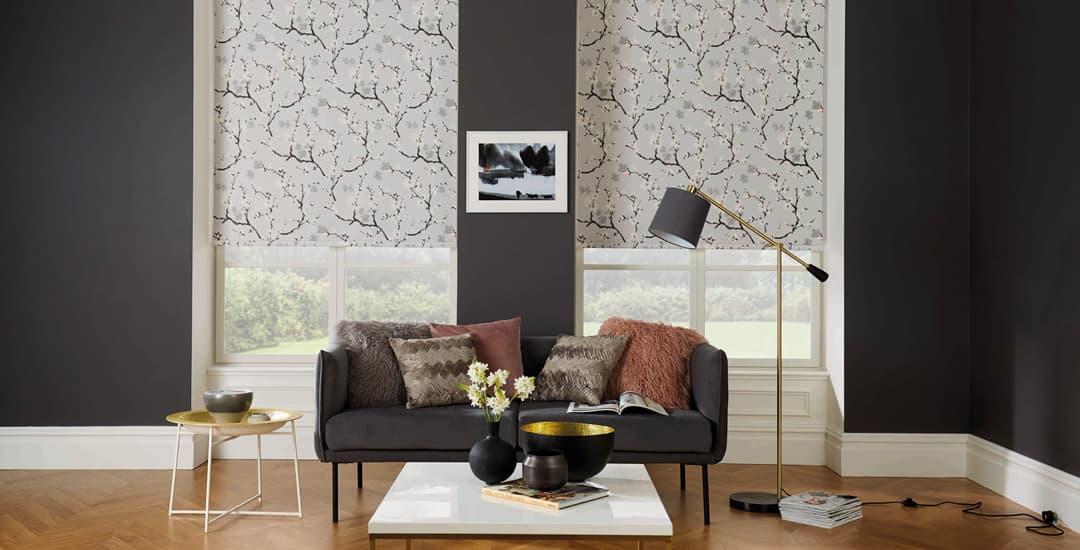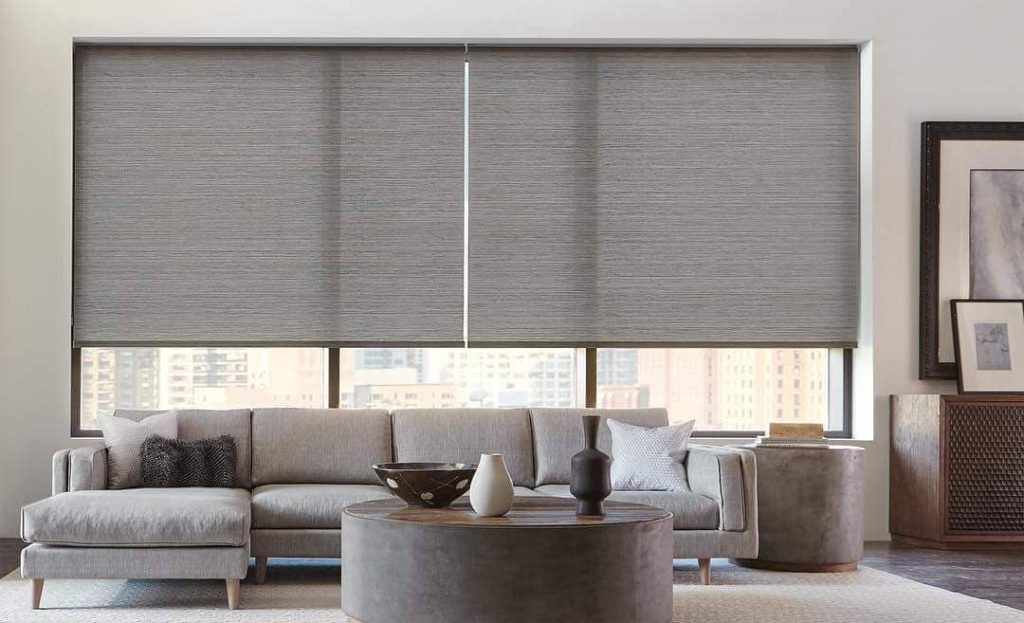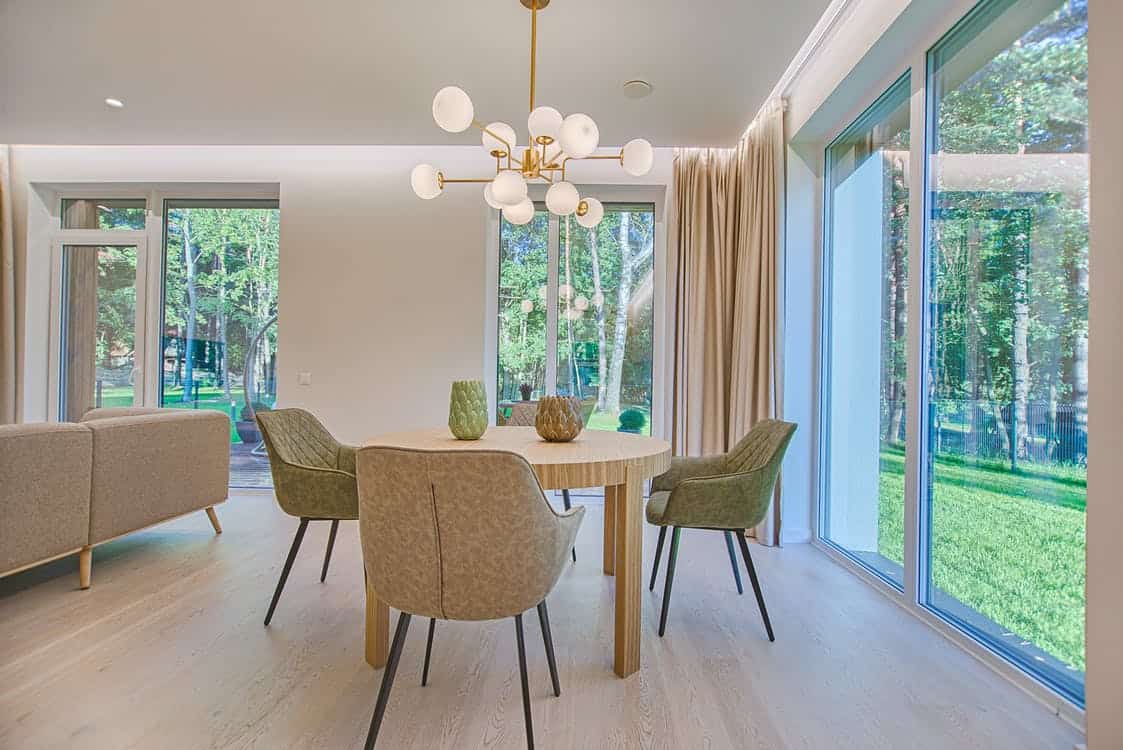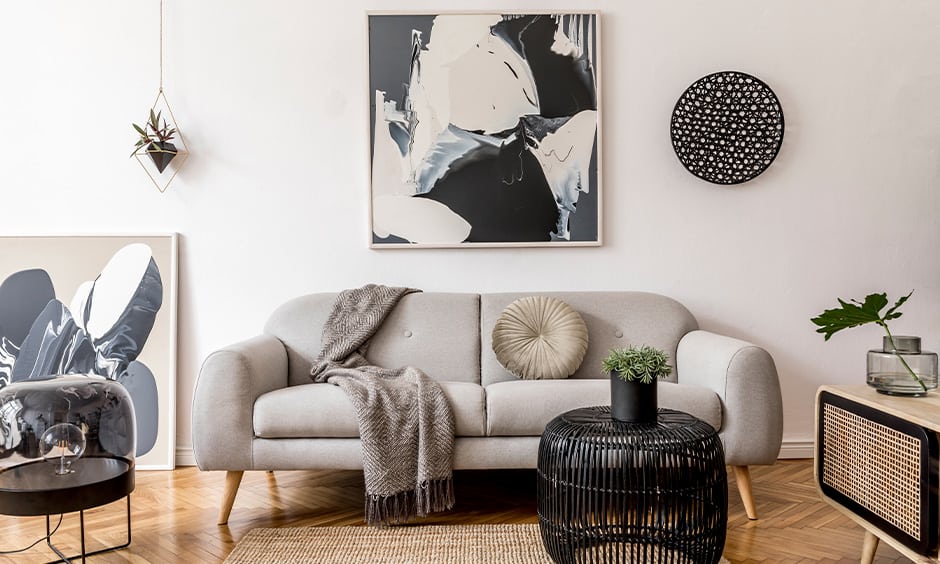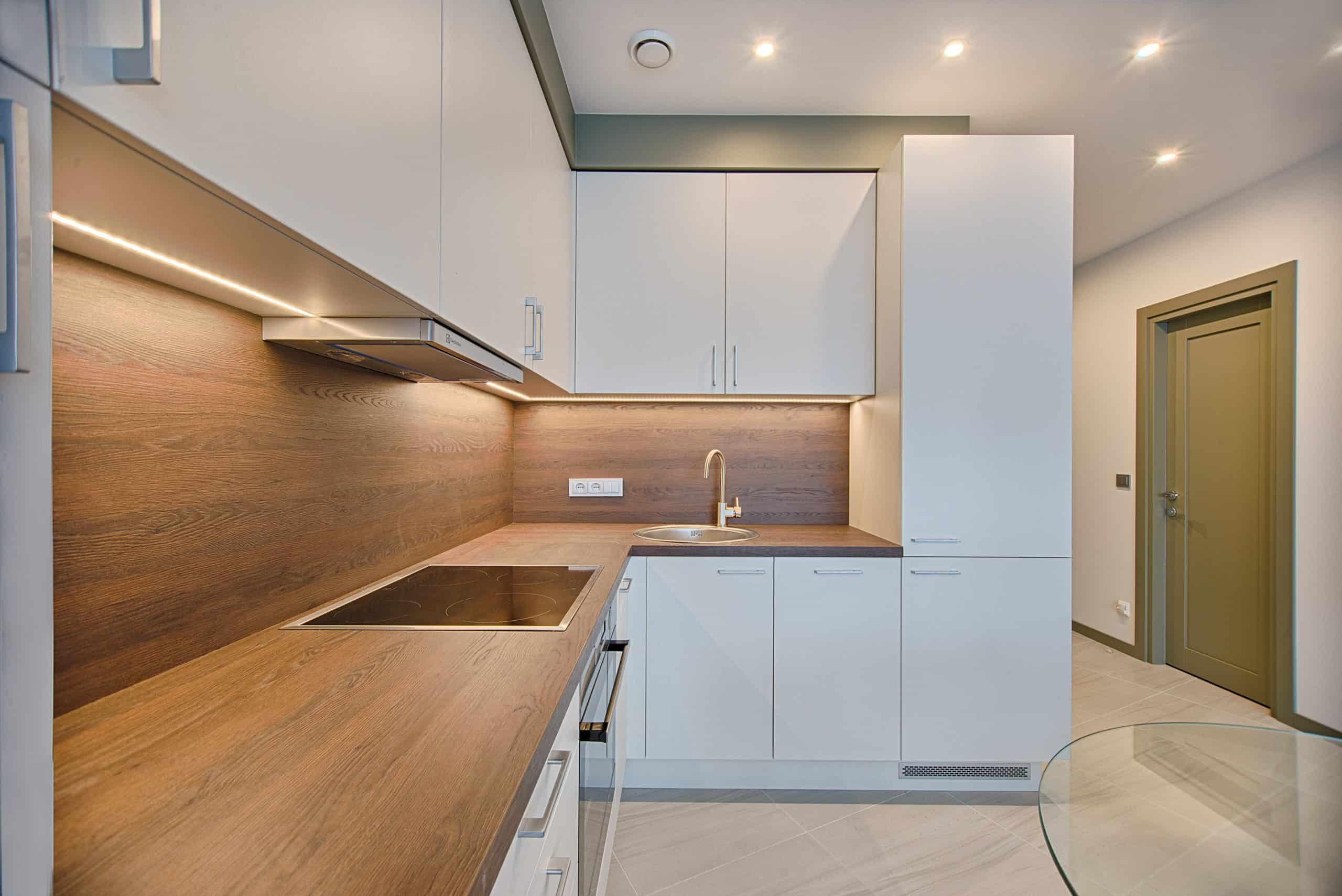People used to dress their windows with curtains before, but nowadays, modern trends have shifted and are now favoring a window treatment with blinds. Window blinds are classy and come in varieties to fit different interior designs. With the many varieties of window blinds available, choosing the right type for your home can be overwhelming. Our article provides a guide on how to choose the right blinds for your home.
Let’s get started!
What Are Window Blinds
Window blinds are window covers designed to control the light and privacy in a room. They are versatile and functional, consisting of horizontal or vertical slats adjusted to regulate the amount of sunlight entering a space and to provide varying levels of privacy.
Image credit: housebeautiful.com
The slats of blinds can be adjusted to different positions, enabling precise control over the direction and intensity of light entering a room. Tilting the slats upward can direct sunlight towards the ceiling, providing a diffused, ambient light. Conversely, tilting the slats downward can create more focused lighting or completely block out light, depending on the desired level of privacy and light control.
The Primary Functions of Window Blinds
Window blinds serve several primary functions, including:
1. Light Control
Window blinds are primarily used to control the light entering a room. By adjusting the angle or position of the slats, you can easily regulate the level of natural light. This allows you to create a bright, airy atmosphere or block out light completely for privacy or better sleep.
2. Protection of Furniture and Flooring
Image credit: bandbwindowcoverings.com
Blinds offer protection against the damaging effects of direct sunlight. They can help prevent UV rays from fading or discoloring your furniture, flooring, or artwork by blocking or filtering the room’s sunlight.
3. Noise Reduction
While not as effective as heavy curtains or specialized soundproofing solutions, certain blinds, such as cellular or honeycomb blinds, can help reduce noise levels by absorbing sound vibrations.
4. Sun Glare Reduction
Blinds reduce sun glare, especially when working on a computer screen or watching television. By angling the slats of aluminum blinds, you can deflect sunlight, minimizing the direct glare entering the room.
5. Aesthetics and Decoration
Image Credit: imagineerremodeling.com
Window blinds come in various styles, colors, and materials, allowing you to choose window treatments that enhance a room’s overall look and feel. They can complement your interior design and contribute to the overall aesthetics of the space.
Types of Window Blinds
Several types of window blinds are available, each with unique features and benefits. Here are some common types of window blinds:
1. Venetian Blinds
Image credit: broadview-blinds.co.uk
Venetian blinds are horizontal slatted blinds typically made of metal, wood, or plastic. They are one of the prevalent types of blinds and can be adjusted to control the amount of light and privacy. They are available in various widths and colors.
2. Vertical Blinds
Image credit: luminosblinds.co.za
Vertical blinds consist of vertical slats that can be tilted to control light and privacy. They are commonly made of fabric, vinyl, or metal and are often used for large windows or sliding glass doors.
3. Roller Blinds
Image credit: somblinds.com.au
Roller blinds are made of a single material that rolls up and down around a tube. They can be operated with a motorized system or manually. Roller blinds are simple, versatile, and come in various colors and patterns.
4. Roman Blinds
Image credit: harrisonscurtains.co.nz
Roman blinds are fabric blinds that fold up in horizontal pleats when raised. When closed, they create an elegant, soft look and are available in various fabrics and styles.
5. Bamboo Blinds/Woven Wooden Blinds
Image credit: anwis.pl
Bamboo or woven wood blinds are made from natural materials such as bamboo, rattan, or grasses. They offer a warm, organic look and are often used to create a natural or tropical ambiance.
Factors to Consider When Choosing Your Blinds
When choosing blinds to fit any interior design style, consider the following:
1. The Size and Shape of the Windows
Every home has its unique features. Among those include the windows. Some homes have large windows, while others have small ones.
Image credit: verosol.com.au
Besides the size, some homes have rectangular windows, and others have square or circular ones. Therefore, there’s no size fits all when choosing blinds and shades. Considering that, it’s essential to consider your window size and shape before selecting these treatments.
Additionally, it’ll be better if you consider how your windows open. Do the windows slide, or do they open like typical windows? Based on your answer, choose blinds that ensure your sliding windows remain easy to open.
2. Home Style
A home’s style is another vital aspect when choosing the perfect window treatment and blinds. Like different homes come with different types of windows, so is the style. Some homes are minimalist, while others aren’t. On the other hand, some homes are painted bright while others are darker. These factors should also be considered upon choosing the right window blinds.
Image credit: homedepot.com
It’s, therefore, vital to study your home’s style and determine the perfect blinds to match it. For instance, if a home has a coastal style, white blinds correspond to the style. With such a style, avoiding heavy or dark blinds would be best.
Suppose a home has a farmhouse style. It would be best if you consider texture and patterns. Striped fabric Roman shades will do your home justice in such a case.
3. Fabric
Different blinds come with different materials. Some are made from vinyl, plastic, or wood, while others are made from aluminum. Each of these materials comes with advantages and disadvantages. They also require different levels of care and maintenance. Therefore, it’s best to research these aspects before choosing your ideal blinds.
4. Lighting Requirements
Image credit: remodelista.com
It’s vital to determine the amount of light your home needs. It would help if you also understood that the required light differs from room to room. For example, a kitchen requires lots of natural light compared to a nursery because working in the kitchen requires much light compared to sleeping.
Assess the light required in every room and base the choice on your findings. For rooms requiring much light, settle for blinds that allow light to pass through and blackout blinds for far better rooms when they’re darker.
Read more on how to choose the right blinds for any interior design style.
5. Privacy
Your home should be a safe space where you can have security and privacy. For that reason, it’s crucial to consider privacy when choosing blinds. The best thing about privacy is that it doesn’t depend on the home’s design. Whether your own or rent or if you have a minimalist home or otherwise, privacy is vital. Fortunately, lots of blinds on the market are designed with privacy in mind. These blinds offer cover and protection from prying eyes.
Image credit: blindio.net
6. Levels of Humidity
As mentioned earlier, every blind material comes with advantages and disadvantages. Some can stand up to high humidity levels, while others can’t. Homes with high humidity require faux wood blinds or metal since they can withstand moisture. Such materials are also ideal for bathrooms and kitchens where moisture is always high.
7. Insulation Requirements
Did you know that blinds can help insulate your home? Some blinds are designed to keep exterior air locked outside, and vice versa. Therefore, when the outside is cold or hot, it won’t affect your indoor air quality. As a result, you save on cooling and heating bills when the exterior air is cold or hot, increasing energy efficiency in your home.
What Is the Installation Process for Window Blinds
Installing window blinds typically involves the following steps:
i. Measure the Window
Image credit: architecturaldigest.com
Start by calculating the width and height of the window frame where you plan to install the blinds. Make sure to measure accurately to ensure the blinds will fit properly.
ii. Choose the Type of Blinds
Various types of blinds are available, such as Venetian, roller, vertical, etc. Select the type that suits your preferences and window style.
iii. Purchase the Blinds
Once you have determined the type of mini blinds you want, purchase them from a reputable supplier or home improvement store. Be sure to check that the size matches your window measurements.
iv. Gather the Necessary Tools
Before you start the installation process, gather the tools you’ll need, typically a tape measure, screwdriver, level, pencil, and a drill (if necessary).
v. Mount the Brackets
Image credit: invisystech.com
Depending on the type of blinds, you will need to install mounting brackets. Hold a bracket against the window frame’s top corner, ensuring it’s level. Use a pencil to sketch the screw holes. Repeat this process for the remaining brackets, ensuring they are evenly spaced. If required, use a drill to create pilot holes for the screws. Finally, attach the brackets securely using a screwdriver.
vi. Install the Blinds
For most blinds, you’ll need to insert the headrail (the top part of the blinds) into the brackets. Ensure it fits snugly into the brackets and locks into place.
What Is the Maintenance and Care For Window Blinds
Image credit: makemyblinds.co.uk
Proper maintenance and care for window blinds can help lengthen their lifespan and keep them looking clean and functional. Here are some general procedures for maintaining and caring for window blinds:
1. Dusting
Regular dusting is important to prevent the buildup of dirt and dust on the blinds. You can use a microfiber cloth, a vacuum cleaner with a brush extension, or a feather duster to remove dust from the slats gently. Start from the top and operate your way down, reaching each slat.
2. Spot Cleaning
If you detect any stains or spots on the blinds, you can spot-clean them using a mild detergent or a specialized blind cleaner. Follow the guidelines provided with the cleaner and use a soft cloth or sponge to scour the affected areas gently. Avoid using abrasive cleaners or swabbing too hard, as it can damage the blinds.
3. Deep Cleaning
Image credit: makemyblinds.co.uk
Periodically, you may want to give your blinds a more thorough cleaning. You can do this by removing the blinds from the window (if they are detachable) or extending them fully. Fill a bathtub or an extensive basin with warm water and mild detergent. Immerse the blinds in the water and gently agitate them to remove any dirt. Rinse them entirely with clean water and allow them to air dry before reinstalling them.
4. Handling
When operating your blinds, be gentle and avoid pulling or tugging on the cords or slats. Rough handling can cause damage or misalignment. Use the control mechanisms provided (such as a wand or cord) to open, close, or adjust the blinds as intended.
5. Repairs
If you notice any damaged or broken slats, strings, or mechanisms, it’s important to address them promptly. Many blinds can be repaired by replacing individual components. Contact the manufacturer or professional blind repair service for guidance on how to fix specific issues.
Image credit: checkatrade.com
What Are the Distinctions Between Blinds and Shades?
Blinds and shades are popular window coverings used for privacy, light filtering, and aesthetics, but they have some fundamental differences. Here are the key distinctions between blinds and window shades below:
1. Design
Blinds are typically made of hard materials such as wood, metal, or vinyl. They feature horizontal or vertical slats that can be adjusted to regulate the light entering the room. On the other hand, shades are commonly made of soft materials such as fabric or woven materials. They are designed to be pulled up or down to cover the window without adjustable slats.
2. Light Control
Blinds offer precise control over light filtration and privacy. By adjusting the inclination of the slats, you can regulate the amount of light that penetrates the room while maintaining privacy. Shades generally provide more diffused light when fully lowered but do not offer the same level of precise light control as blinds.
3. Style Options
Image credit: ebay.co.uk
Blinds come in various styles, including horizontal blinds (such as Venetian blinds) and vertical blinds. They offer various design options, including different slat widths, colors, and finishes. Shades offer a versatile range of styles, such as roller shades, Roman shades, cellular shades, and pleated fabric shades too. They come in various colors, patterns, and fabric options to suit different décor preferences.
4. Insulation and Energy Efficiency
Depending on the material and design, shades can provide better insulation and energy efficiency than blinds. Cellular shades, or honeycomb shades, have a unique cellular construction that traps air, creating a layer of insulation between the room and the window. This design helps to keep the room cooler in summer and warmer in winter. Blinds with slats, particularly wood or faux wood shades, can also provide some insulation benefits.
Frequently Asked Questions
a) Should blinds be shadier or lighter than walls?
There is no hard and fast rule that blinds should be darker or lighter than walls. Both options can work, depending on the desired look and feel of the room. If you want a cohesive and seamless look, you can choose blinds the same color as your walls. This will create a uniform appearance that can make the room feel more spacious and calming.
Image credit: englishblinds.co.uk
If you want to create contrast and visual interest, you can choose blinds that are darker or lighter than your walls. For example, if you have light-colored walls, choosing darker blinds can create a striking contrast and add depth to the room. Similarly, if you have dark-colored walls, choosing lighter blinds can help to brighten the space.
b) Should blinds match walls or furniture?
Matching blinds with the walls can create a cohesive, unified look that makes the windows and walls blend seamlessly. This is a suitable choice to create a calm and peaceful atmosphere or emphasize other design elements in the room.
On the other hand, matching blinds with furniture can create a more vibrant and interesting look. This is an ideal alternative when you want to make an impression with your window treatments and draw attention to the furniture or decor in the room.
c) What type of blinds are best for a living room?
Roller blinds have a sleek, contemporary appearance that makes them an excellent choice for houses with a modern design. They offer good privacy and light control and can be adjusted to allow varying degrees of light into the room. Solar blinds are a terrific option if your external view is too beautiful to block. These shades are available in various openness levels to soften external light and keep a natural aspect in the family or dining room.
Image credit: theblindsgallery.com.au
You can also choose elegant Roman blinds in various patterns, colors, and materials, adding style and sophistication to the living room. They are a good option for controlling light and providing privacy. Lastly, you can choose Venetian blinds with various materials such as wood, aluminum, and PVC. They provide excellent light control and privacy and are ideal for modern or contemporary living rooms.
d) What color is best for blinds?
The best color for blinds will depend on various factors, such as the room’s décor, the amount of light you want to let in, and personal preference. However, some popular options for blind colors include white, neutral shades, and bold colors. If you want to add color to your room, consider bold-colored blinds such as red, blue, or green. These can make a bold statement and add some personality to your space.
Additionally, beige, cream and gray shades are versatile and work well with different décor styles, while white is a popular choice for blinds as it gives a clean, crisp look to the room and allows maximum light to come in. It also complements any décor and style.
e) Do blinds look better inside or outside the window?
Traditionally, blinds are installed inside the window frame, creating a cleaner, more streamlined look. It also allows for more control over the light entering the room. Additionally, inside-mounted blinds can be a good choice for smaller windows or windows with limited depth.
Image credit: jclicht.com
However, in some cases, outside-mounted blinds may be preferred. For example, if the window frame is not deep enough to accommodate the blinds or if there is an obstruction, such as a window handle, that would interfere with the operation of the blinds. Outside-mounted blinds can also give the illusion of a larger window and can help block more light and provide better privacy.

